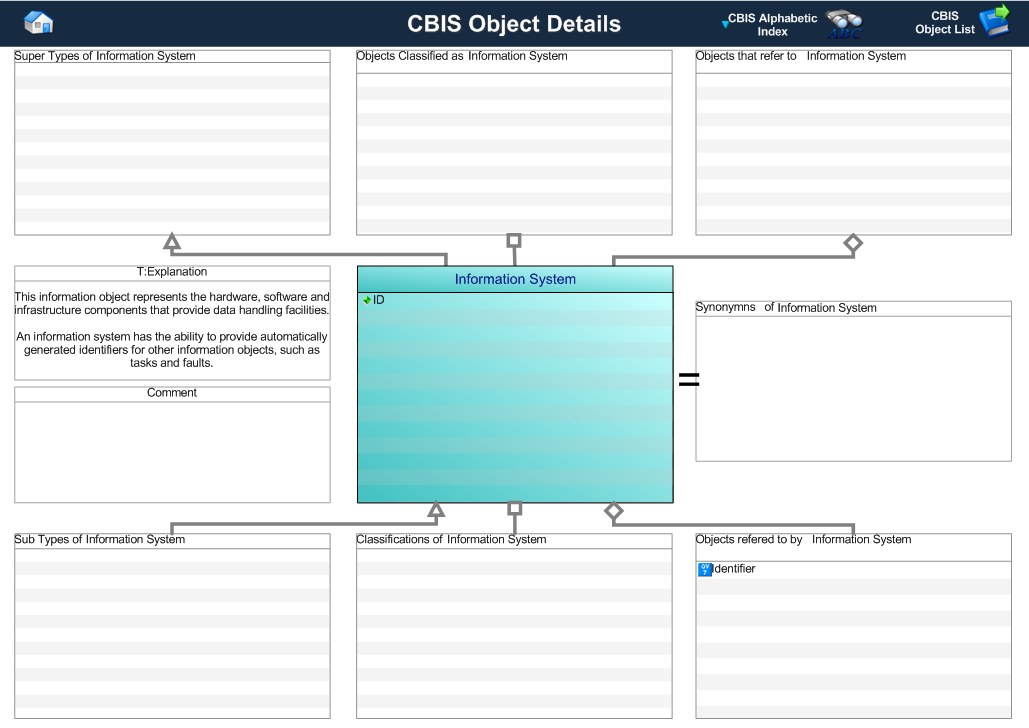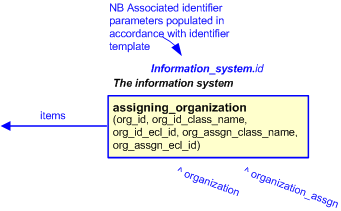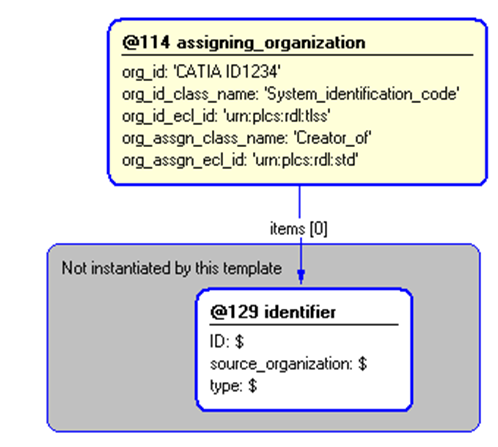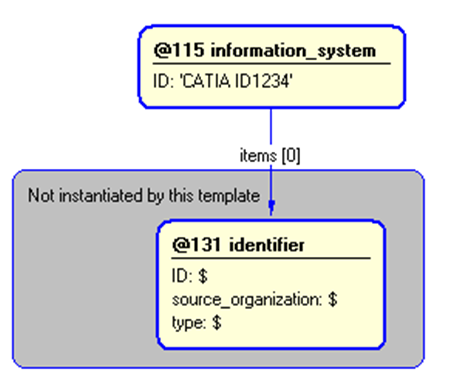Template:— information_system (info_sys)
Context:— UK_Defence |
Date: 2009/04/17 09:34:16
Revision: 1.2
|
This section specifies the template information_system.
NOTE
The template has been defined in the context of
UK_Defence.
Refer to the business context for details of related templates.
NOTE
An explanation of a template and the associated instantiation path is
provided in the
Template overview
section.
This template describes how to represent a UK_Defence information system, using
Organization.
This mapping, using Organization,
enables the source of an identifier to be an information system as any information system for exchange will be
given an identifier by a specific organization.
This information object represents the hardware, software and infrastructure components that provide data handling
facilities.
An information system has the ability to provide automatically generated identifiers for other information objects,
such as tasks and faults.
For further information about the representation of an information system, see below.
This information object represents the hardware, software and infrastructure components that provide data handling
facilities.
An information system has the ability to provide automatically generated identifiers for other information objects,
such as tasks and faults.
Figure 1 — Graphical Representation for Business Object Information System
Record:
The definition of a Identifier object is:
This information object represents the hardware, software and infrastructure components that provide data handling
facilities.
An information system has the ability to provide automatically generated identifiers for other information objects,
such as tasks and faults.
|
Attribute name
|
Attribute description
|
Attribute type
|
Optionality
|
| ID |
This is the identifier of the information system. |
Identifier |
Mandatory |
Table 1 — Identifier attribute details
The EXPRESS-G diagram in
Figure
2
shows the templates and EXPRESS entities that are required
to represent the template
"information_system".
The text highlighted in blue shows the template parameters.
Figure 2 — An EXPRESS-G representation of the Information model for information_system
The graphic for the template to be used in other EXPRESS-G diagrams
is shown in Figure
3
below.
Figure 3 — The graphical representation of the information_system template
The following input parameters are defined for this template:
This is the identifier of the information system.
The items to which the information_system is assigned
The following reference parameters are defined for this template:
Allow the
Organization
entity instantiated in this path to be referenced when this template is used.
Note: The
Organization
entity can be referenced in a template path by:
%^target = $information_system.information_system%
where
target
is the parameter to which the
Organization
is bound.
The following parameter combinations specify a uniqueness constraint:
Unique constraint: Unique identifier
Each instance of the
entity
(
Organization)
within the data set shall be uniquely identified
by the following parameters on this
template (information_system) namely:
ID.
The
instance is
referenced by the following template parameter:
information_system.
Any given identifier shall only be assigned to an information system once.
The instantiation path shown below specifies the entities that are to be
instantiated by the template.
A description of templates and the syntax for the instantiation path is
provided in the
Templates Help/Information section.
/
assigning_organization(
org_id=@ID,
org_id_class_name='System_identification_code',
org_id_ecl_id='urn:plcs:rdl:uk_defence',
org_assgn_class_name='Creator_of',
org_assgn_ecl_id='urn:plcs:rdl:std',
items=@items)/
%^information_system = $assigning_organization.organization%
The instance diagram in Figure
4
shows an example of the EXPRESS entities and templates that are instantiated by the template:
/information_system(id='CATIA ID1234', items='#129')/
(an illustration of the consolidated information_system template is shown in
Figure
5 below.)
Figure 4 — Entities instantiated by information_system template
The instance diagram in
Figure
5
shows the graphic symbol for the template that is to be
used in other instance diagrams. The example template is:
/information_system(id='CATIA ID1234', items='#129')/
Figure 5 — Instantiation of information_system template
Characterizations
No common characterizations of the template
information_system
have been identified. However, the ISO 10303-239 EXPRESS model
may enable other assignments to the entities instantiated by the template.




